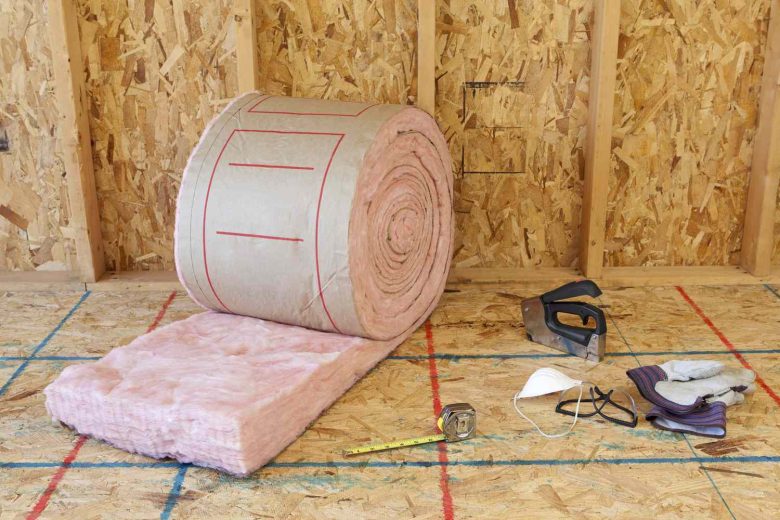Sustainability and energy efficiency have become very important in today’s world, leading to amazing changes in buildings and architecture. Insulation is one of the areas that is changing a lot due to new ideas. In the past, insulation was only about keeping the temperature in a room stable. However, with the advent of new technologies and research, insulation materials have changed, bringing multiple benefits, such as better energy efficiency, greater comfort and less damage to the environment. In this article, we explore the world of new insulation materials that are changing the way we plan and build homes and offices.
1. Aerogels: The Ultimate Insulator
Aerogel, also known as “frozen smoke”, is a very lightweight material with excellent insulating properties. These materials have a gel structure, but the liquid part has been changed by the gas. As a result, they are almost all air. Although aerogels are not very dense, they are very heat resistant. This makes them an excellent choice for construction, clothing and even spacecraft.
2. Thin and Strong: Vacuum Insulation Panels (VIP)
VIPs or vacuum insulation panels are a major advancement in insulation technology. These panels have a material in the center surrounded by a vacuum sealed housing. This makes it more difficult to transfer heat through conduction and convection. VIPs are especially useful when space is tight, as their low-profile shape provides a high degree of insulation without the use of bulky materials.
3. Phase Change Materials (PCM): Changing Temperature Controllers
Phase change materials (PCMs) are substances that can store and release thermal energy when changing state, such as from solid to liquid. This unique property allows PCM to act as a thermostat that absorbs excess heat when the environment is warm and releases it when the environment cools down. Adding PCM to insulation helps keep indoor temperatures more stable so you don’t have to heat or cool your home.
4. Hempcrete: Sustainability and Insulation Combined
Hemp concrete is an environmentally friendly insulation material that is popular for its longevity. Hemp concrete is made from hemp fibres, lime and water. It plays a protective role and is also used to store carbon. The porous structure allows it to breathe, preventing moisture build-up for a healthier indoor air.
5. Transparent Insulation: Where Form meets Function
Traditional insulation often blocks natural light, making it more difficult to save energy and degrading the home’s appearance. Transparent insulation, such as airgel-based windows, can solve this problem because they trap heat but still let in light. The new idea saves energy and makes it easier to see than ever before.
6. Insulation of Old Materials: A Second Chance
Insulation using recycled products is becoming more common as the world becomes more aware of how waste should be disposed of. Denim, newspaper, and even recycled plastic bottles can be used to make good insulation. This not only reduces the need for new materials, but also helps avoid waste in landfills.
7. Nanotechnology Isolation: Beyond Traditional Limits
Nanotechnology has penetrated many fields and shielding is one of them. When added to insulation materials, nanoparticles can improve their thermal properties, allowing them to better block, reflect or absorb heat. This new level of insulation will make homes more energy efficient.
8. Bio-Based Insulation: A Greener Approach
Biobased insulation is made from renewable materials such as corn, soy and wool. These materials provide good insulation and have less impact on the world as a whole. As sustainability becomes more important, biobased insulation is a good option for environmentally friendly building.
9. Geopolymer Insulators: The Cornerstone of the Future
A geopolymer is a material made from industrial waste such as fly ash and slag. These materials do not catch fire easily and are good insulators. Geopolymer insulators are likely to change the future of construction because they are durable, can insulate and use fewer standard raw materials.
10. Natural Fiber Insulation: Bringing Past and Future Together
Natural fiber insulation takes inspiration from old ways of doing things and combines them with new technology. Sheep’s wool, cotton and straw are all treated to make them good insulators. The fact that these materials are both old and new is one of the reasons why they are so commonly used in eco-friendly construction.
Conclusion:
Thermal insulation continues to improve, enabling the construction industry to create homes that use less energy, last longer and are more comfortable. From aerogels to transparent insulation, current options meet a wide variety of needs and goals. As we continue to prioritize energy conservation and the environment, these new insulation materials pave the way for a greener, more comfortable future.
FAQs:
1. Are these innovative insulation materials cost-effective?
While some innovative materials can have a high initial cost, their long-term benefits, such as lower energy consumption and improved comfort, often outweigh the initial investment.
2. Can these materials be used in residential and non-residential construction?
Absolute! Many insulation materials are versatile and can be used in a variety of environments, from homes to office buildings and industrial facilities.
3. Do these materials require special installation?
In some cases, yes. It is important to consult a professional who understands the specific requirements of each material to ensure proper installation and performance.
4. Are these materials environmentally friendly?
Yes, many of these materials are designed with sustainability in mind. They use renewable resources, reduce waste or have minimal impact on the environment during production and use.
5. How do I determine which innovative insulation material is best for my project?
Choosing the right insulation depends on factors such as your budget, the climate in your area, the type of building and your overall sustainability goals. Consulting an expert can help you make an informed decision based on your specific needs.



